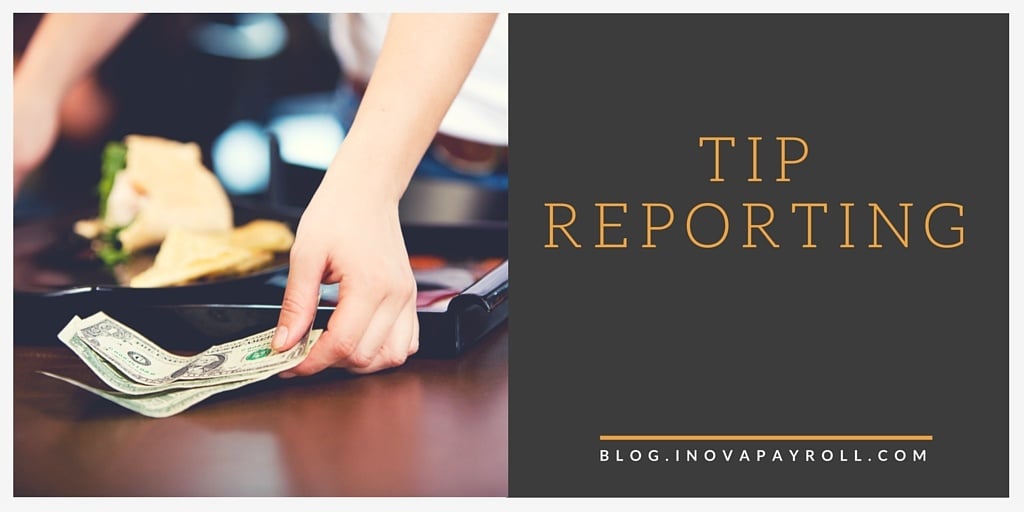Tip income represents special payroll and reporting challenges for restaurant employers. Underreporting of tip income triggers a two-fold effect: inadequate withholding of the employee’s share of taxes and underpayment of the employer’s portion. Still, that’s just one side of the tip reporting coin. On the other side are requirements you must meet, such as minimum wage, tax withholding and tip allocation.
Minimum Wage for Tipped Workers and FICA Tip Credit
Under federal law, if you have employees who don’t make enough tips to meet the minimum hourly wage – currently $7.25 – you must make up the difference. You can pay a lower minimum wage of $2.13 per hour if that amount and the employee’s tips equal at least $7.25 per hour – this is called a tip credit. The FICA tip credit is one that most restaurant owners are due, but many aren’t using. Check with your state labor department to see if it has different minimum wage criteria for tipped workers.
Employee Tip Reporting Form
Any tipped employee making $20 or more per month in tips must report the total amount to you by the 10th of the next month. The employee can record her daily tips on IRS Form 4070A, Employee’s Daily Record of Tips, which must be submitted to you by the due date. She doesn’t have to tell you about tips under $20 a month, but she must report them to the IRS when she files her return.
Withholding Taxes on Tips
Are tips taxable? Yes, all of them. After the employee submits her tip report, you must withhold taxes from her wages and tips. This includes Social Security and Medicare taxes, federal income tax and applicable state and local taxes. The IRS has a specific order for withholding taxes when the employee’s wages are insufficient to cover all taxes. You can deduct uncollected taxes from her next paycheck, if enough funds are available.
Employer Reporting and Forms
Include the employee’s wages, reported tips and any uncollected Social Security and Medicare taxes for the year on her W-2. Be sure to also report uncollected taxes as an adjustment on your employment tax return (Form 941 or Form 944).
If you run a large restaurant, complete and file IRS Form 8027, Employer’s Annual Information Return of Tip Income and Allocated Tips, which summarizes the business’ total sales and tips. A large restaurant is one where:
- Tipping is customary
- Food or beverages are provided and consumed on the premises
- More than 10 employees are usually employed.
Form 8027 is typically due by the end of February if filing by paper, and by the end of March if filing electronically.
Tip Allocation and the 8 Percent Rule
A nationwide study reveals that at full-service, dine-in restaurants 44 percent of Americans tip 16-20 percent. But, restaurant employees don’t always report all their tips, so you may have to allocate tips.
If you run a large establishment, the total tips reported to you must be no less than 8 percent of your annual sales. Otherwise, you must allocate tips to each employee whose reported tips did not equal at least 8 percent of their food-and-drink sales. Tips may be allocated based on either of the following:
- The employee’s portion of gross receipts. Any restaurant can use this method.
- The employee’s share of hours worked. Only restaurants with fewer than 25 full-time employees during a pay period can use this method.
- A formula you and your employees agreed on. This agreement must be in writing.
Key steps for allocation:
- Allocate tips during the regular payroll period, periodically such as quarterly or monthly, or annually.
- Ensure that the total reported tips for the allocation period are at least 8 percent of your annual sales for that period.
- Include the additional tip income assigned to each employee for the year on their W-2.
- Report the combined total amount of allocated tips for the year and the allocation formula on Form 8027.
Do not allocate tips to employees whose reported tips are 8 percent or more of your annual food and beverage sales.
Best Practices for Collecting and Paying Tips
Consider strengthening your chances of compliance via the following strategies:
- Have tipped employees record their tips daily or by pay period on Form 4070A.
- Establish a valid and reasonable tip pooling arrangement, if you require tip sharing.
- Log cash tips in the POS system and run reports to evaluate the information.
- Educate your staff on your tip reporting policies.
Promoting Accurate Tip Reporting Through TRAC
Aware that employees often fail to report all their cash tips, the IRS established voluntary tip agreements to encourage accurate tip reporting. For instance, employers can participate in the Tip Reporting Alternative Commitment (TRAC) program by signing an agreement with the IRS and fulfilling certain obligations – such as training employees on their tip reporting duties.
{{cta(‘6dec0468-9c94-48f3-a405-04f390bb3a47’)}}




